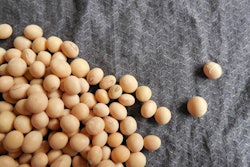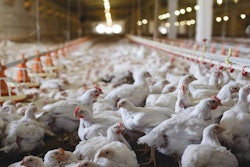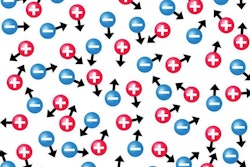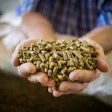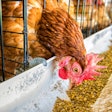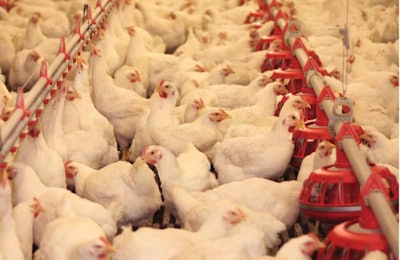
This article appears in the June issue of Feed International. View all of the articles in the digital edition of this magazine.
Poultry egg and meat production account for more than 40 percent of global compound feed consumption. According to a recent scientific study, the poultry industry’s global consumption of antibiotic growth promoters, or AGPs, is three times higher than that of cattle. Researchers estimate that the global average annual consumption of antimicrobials per kilogram of animal produced was 45 mg/kg, 148 mg/kg, and 172 mg/kg for cattle, chicken, and pigs, respectively.
More intensive industrial production has placed greater demands on birds and given rise to several challenges related to gut health, including unspecific dysbiosis problems, reduced nutrient digestibility, and impaired barrier function. These issues put pressure on farm profitability and explain, at least in part, the motivations for sub-therapeutic application of antibiotics for disease prevention and growth promotion.
AGPs have been banned in more than 30 countries worldwide, mainly due to concerns about human health and the emergence of superbugs, or bacteria resistant to multiple types of antibiotics. Thirty-five countries have a veterinary prescription requirement.
Consumer demand for antibiotic-free meat has also seen a strong upsurge. Calls for greater antibiotic stewardship that preserves their medicinal value have been voiced. Certain industry groups have urged producers to thoughtfully weigh the use of AGPs in the context of overall profitability in light of domestic consumer demand and export requirements.
Trends in AGP use
Based on the global compound feed production and antibiotic consumption data, each ton of compound feed in the world contains an average of 66 grams of antibiotics, and this figure has likely risen. Without indicating any relationship between resistance level and antibiotic usage, the recommended dosage of subtherapeutic antibiotics has increased during the past 60 years from 10 to 20 grams/ton in the early 1950s to 40 to 50 grams/ton in the 1970s. Today, the dosage runs from to 30 to 110 grams/ton.
The average antibiotic use per ton of feed is highest in the United States, followed by China and the EU.
Overall, antibiotic usage per ton of feed is 30 percent higher in the United States and 12 percent higher in China than the global average.

The U.S. and China exceed global average antibiotic consumption for livestock, though measures to reduce AGP use have been started in both countries. | IFIF et al.
China and the United States are taking measures to reduce their use of antibiotics in livestock production. In the EU, antibiotic usage is 21 percent less than the global average, in part due to efforts such as the European Union’s 2006 ban on the use of antibiotics as growth promoters in animal feed that has led to a decline in sales.
While the livestock sector’s consumption of antimicrobials is projected to rise by 67 percent between 2010 and 2030, reaching 105,600 tons annually, according to the Organization for Economic Co-operation and Development‘s (OECD) Trade and Agriculture Directive (TAD), our calculations indicate that the sales of novel growth promoters should rise by at least 120 percent over the same period, albeit from a different base.
New ways to promote growth
The experiences in countries that were early to adopt AGP bans, such as Sweden in 1986 and Denmark in 1998, demonstrate that while a move to antibiotic-free production is not without short-term challenges, these can be overcome and flock performance can reach even higher levels. Replacing AGPs relies upon a holistic approach to improve animal health status and performance through better management, biosecurity measures, vaccination programs, diagnostics and feeding strategy.
Because feed costs account for a significant part (up to 70 percent) of total production costs, feeding strategy is a crucial point.
Organic acids, phytogenic feed additives (botanicals, or PFAs), probiotics (direct-fed microbials, or DFMs) and prebiotics have all been identified as potential in-feed antibiotic replacements.
They work in different ways (various modes of action) in order to prevent the proliferation of harmful bacteria, to promote health and immune status, and to enhance animal performance, e.g. by influencing a bird’s anti-inflammatory response.
Significant effort has been paid to identifying which additives will be able to reduce usage of AGPs. In general, novel growth promoters (NGPs) should perform roughly equally as well under practical conditions in order to gain acceptance.
Comparable or better results
Looking across 25 broiler trials performed in various countries worldwide and testing AGPs and NGPs (phytogenics, organic acid-based products or microbials) at a variety of production stages, each NGP group performed similar on average in terms of FCR and average daily gain (ADG) compared to the AGP group.
The feed conversion ratio (FCR) showed an average improvement of 0.05 in the phytogenic supplemented group versus the AGP (control) group in 14 trials. This may be due to the fact that phytogenic feed additives (PFAs) tend to improve digestion and an animal’s anti-inflammatory and anti-oxidative status, directing more energy toward growth.
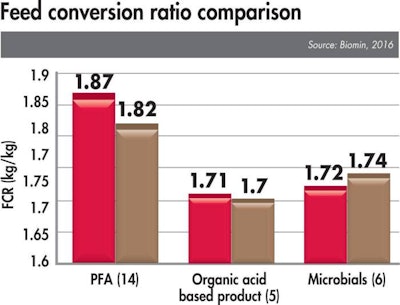
Based on 2.5 kg end weight and 1.7 kg/kg FCR every 0.01 improvement in FCR reduces total feed consumption by 25 grams/bird. This indicates that birds need 0.5 percent less feed to reach the same weight. | Biomin
The organic acid-based additive delivered a 0.01 FCR improvement versus AGP groups averaged over five trials. One potential explanation relates to the additive’s antimicrobial effect that supports feed and water hygiene, the control of gram-negative bacteria, and overall reducing the total bacterial load. Microbials or probiotics delivered an FCR 0.02 higher than the AGP supplemented group across six non-challenge trials. The mode of action of direct-fed microbials (DFMs) serve to reinforce a healthy gut microbiota, and improving gut immune function, having an effect on growth mostly in challenging production conditions.
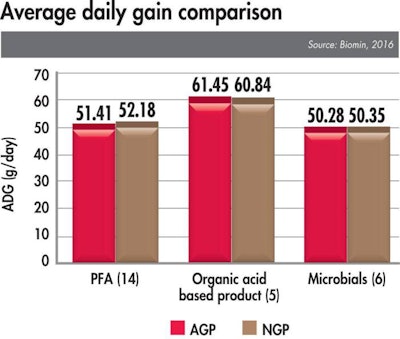
Calculating with a final weight of 2.5kg, only 1 gram extra daily gain per bird means an additional 35 to 42 grams in final weight which results around +1.5 to 1.7 percent increase in income. | Biomin
In terms of ADG of birds, the grams per day figures of the acidifier and microbial groups were similar to the AGP groups. The phytogenic-supplemented group recorded a slight improvement (1.5 percent) compared with the AGP group. ADG can positively influence the final weight of the animals and number of rotations, resulting in higher income.
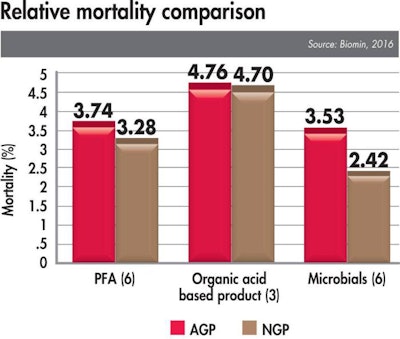
Reduction of mortality in AGP and NGP groups were comparable. Microbials showed the highest mortality reduction of all. | Biomin
Absolute mortality in NGP groups were lower on average compared with the AGP groups. The greatest improvement was observed in the microbial-supplemented groups in six trials where mortality was reduced more than 30 percent versus AGP groups. Mortality in phytogenic and organic acid-based product groups were 12.3 percent and 1.3 percent lowered compared to AGP groups, respectively.
Identifying the right tool
These results suggest that flock performance can be maintained with natural growth promoters and that these can be considered an important tool in antibiotic reduction strategies. However, it appears obvious that various NGPs have differing modes of action, needing to be supplemented at the right time and/or in the correct combination, depending on the specific challenge the animals encounter throughout production.
The aim of NGPs should always focus on disease prevention, not treatment. Species, production phase, farm conditions, product dosage and ROI considerations all influence the choice of feed additive.
Furthermore, combinations of additives have been demonstrated to work successfully in particular situations to achieve specific objectives or to counter challenges such as mycotoxins or pathogenic bacteria. This means that organic acid-based products, microbials and phytogenic feed additives may each play a role in future production as part of a tailor-made solution to help producers achieve bird health and performance goals.
References available on request

